In 66,721 squared-meters, the Mollah Haninah Synagogue is Tehran’s smallest and oldest synagogue. The structure sits in the Oudlajan neighborhood and overlooks Cyrus Street (currently known as Mostafa Khomeini Street). The Dr. Sapir Hospital is at the synagogue’s northern side. The synagogue is in Sarjonbak Alley (known as Taghavi Street), No. 7.
It seems that the synagogue was built in the ends of the 19th century, during Mozaffar ad-Din Shah Qajar’s rule. Although it has been reconstructed and repaired several times, with modern architectural styles being added to it, it still preserves the ambiance of a century ago.
Mollah Haninah Melamed Yazdi has been registered as the founder of this synagogue. It is said that the reason he built the synagogue was to keep his name alive since he did not have any children. Molla Haninah passed away in 1904 and the synagogue’s affairs were trusted to the synagogue council.
The late Mr. Nabati (father of the Alliance School’s headmaster) became Chief Rabbi and Mr. Rahim Yasharpour, the Yosefiyya brothers, and the late Shmuel Shamian became the member of the synagogue council.
Mollah Haninah Synagogue has experienced many ups and downs throughout its long history. In 1941, the world was engulfed in World War II, Reza Shah was exiled, and the Allied forces had occupied Iran. The devastation, famine, poverty, hunger, and the spread of contagious diseases such as plague, cholera, typhoid, and typhus posed a threat that hounded the cities of Iran. And the Oudlajan neighborhood was no exception.
Although the youth center had designated a room to offer medical services in the synagogue, but as health issues escalated, the synagogue was forced to turn into the Kheyrkhah Center’s first clinic, with Dr. Sapir curing patients on an outpatient basis.
Mollah Haninah Synagogue passed these troublesome days. It was set for internal repairs in 1949, when suddenly the ceiling fell. At the same time, Khayrkhah Center’s Hospital, that had been established seven years ago, requested for Mollah Haninah Synagogue to be merged with the hospital, a request that was rejected by the synagogue’s board of directors. The debate on this matter lasted for two years, and during this time the members of the synagogue had to hold their religious ceremonies under a cover that had been installed on the roof of the synagogue. Finally, after much debate, the synagogue council agreed to move to a courtyard adjacent to the hospital and to cede the Mollah Haninah Synagogue to the Charity Center Hospital.
The new location was designed to accommodate 50 people, but sometimes more than 100 members showed up. The new location did not have the capacity for the increasing number of members, most of whom had to stay in the synagogue’s yard during ceremonies.
Five years later, the synagogue’s council decided to expand the synagogue building. But they needed a budget for that. Yosef Derakhshan, servant and member of the board of directors of the synagogue put it upon himself to raise the money they needed. He visited all the synagogues and collected aid from the people.
Eventually, reconstructed ended in 1956 and the synagogue was reopened on the night before Simchat Torah. The ceremony was spiritual. The synagogue’s Torah scrolls that had been temporarily taken to another location were returned to their home in the Mollah Haninah Synagogue.
In 1961, the council of the synagogue undertook an expansion project to increase its capacity by incorporating a portion of the courtyard into the existing building.
Yosef Derakhshan faithfully served the synagogue for 40 years. He passed away in 1994. Following his departure, the responsibility of overseeing the synagogue fell into the capable hands of his brother, Noorollah Derakhshan. Noorollah is a member of the synagogue council and is also an active philanthropic community figure.
Since the Jewish community have left the Oudlajan neighborhood, Mollah Haninah Synagogue only qualifies for minyan on Shabbats. Some particular days and ceremonies, such as Lag BaOmer and Simchat Torah, draws Iranian Jews from all corners of Tehran to this synagogue. The synagogue also holds Kapparot ceremonies every year.
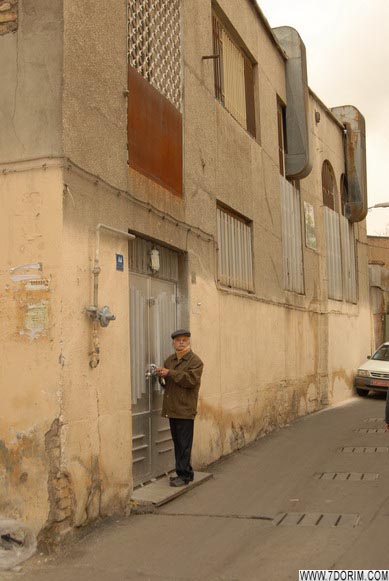
Taqavi Alley at the entrance of Mollah Haninah Synagogue
Spring 2009
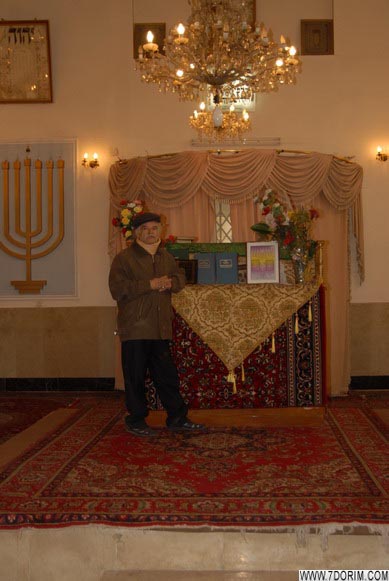
Noor Allah, the servant of Mollah Haninah Synagogue
Spring 2009
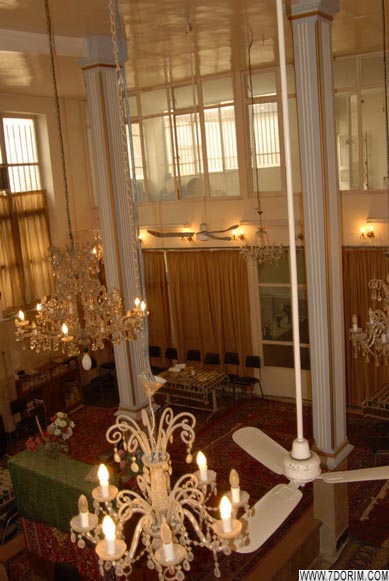
Mollah Hanina Synagogue
Spring 2009
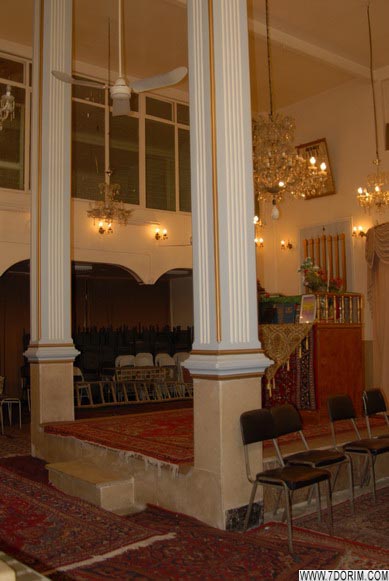
South side of Mollah Hanina Synagogue
Spring 2009
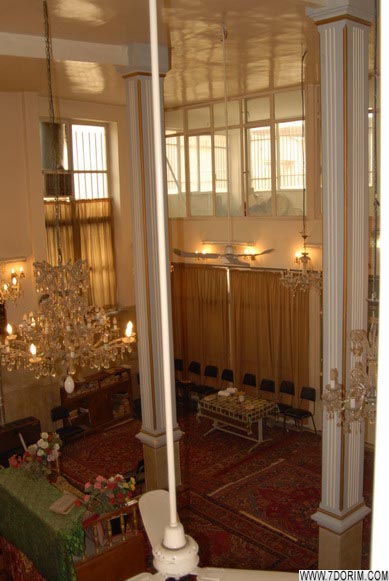
Mollah Hanina Synagogue
Spring 2009
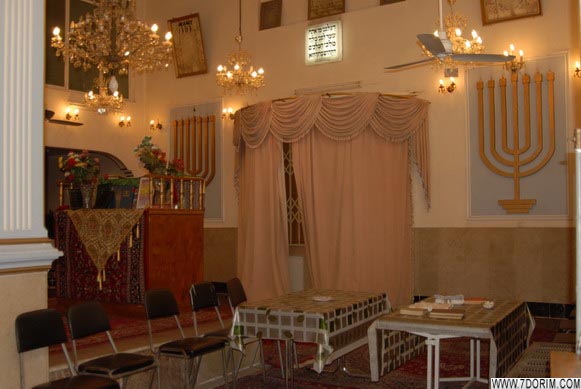
Mollah Hanina Synagogue
Spring 2009
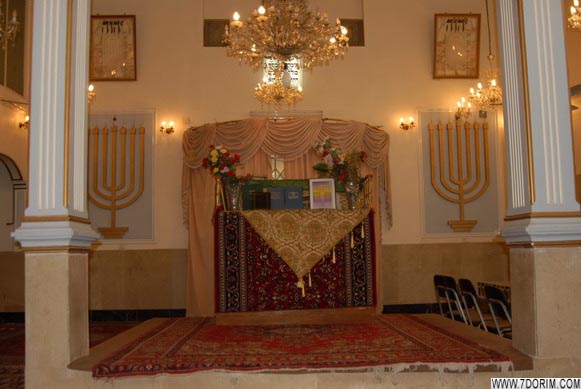
Mollah Hanina Synagogue
Spring 2009
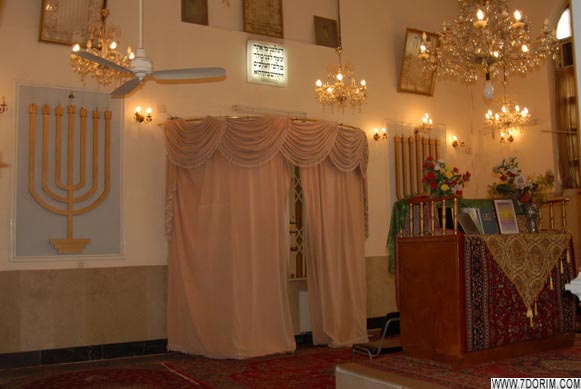
The position of the Torah
Spring 2009
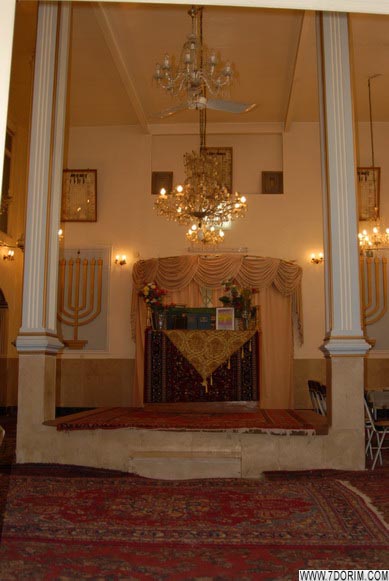
Mollah Hanina Synagogue
Spring 2009
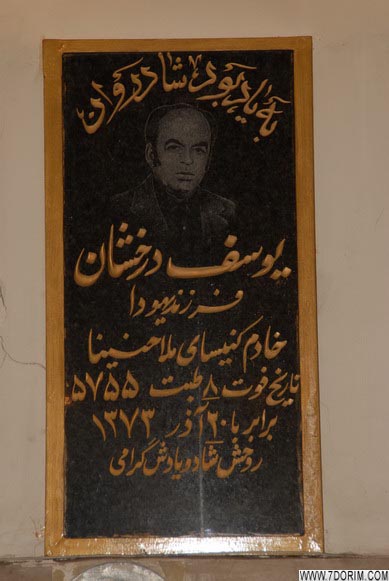
Memorial plaque, Youssef Derakhshan
